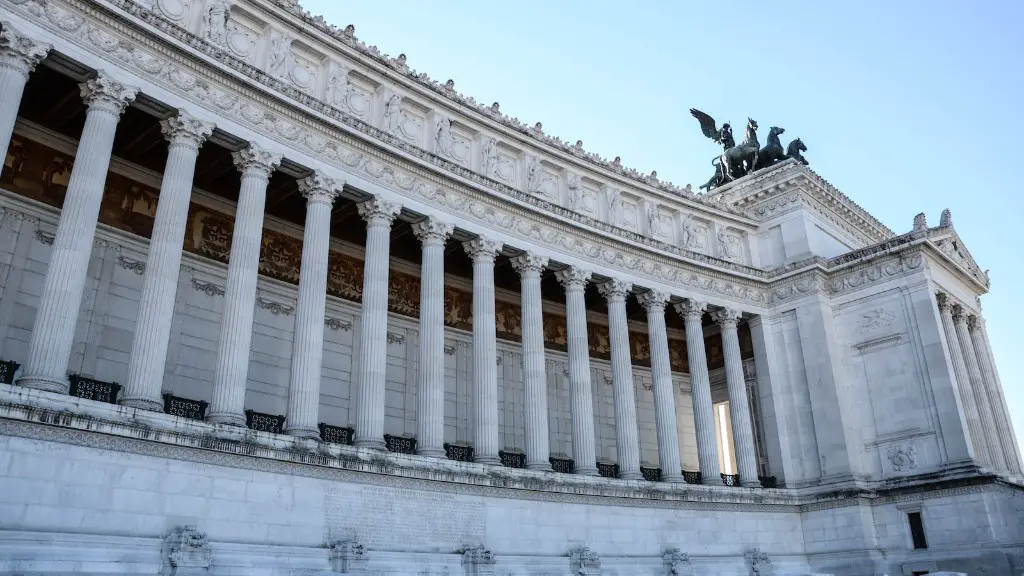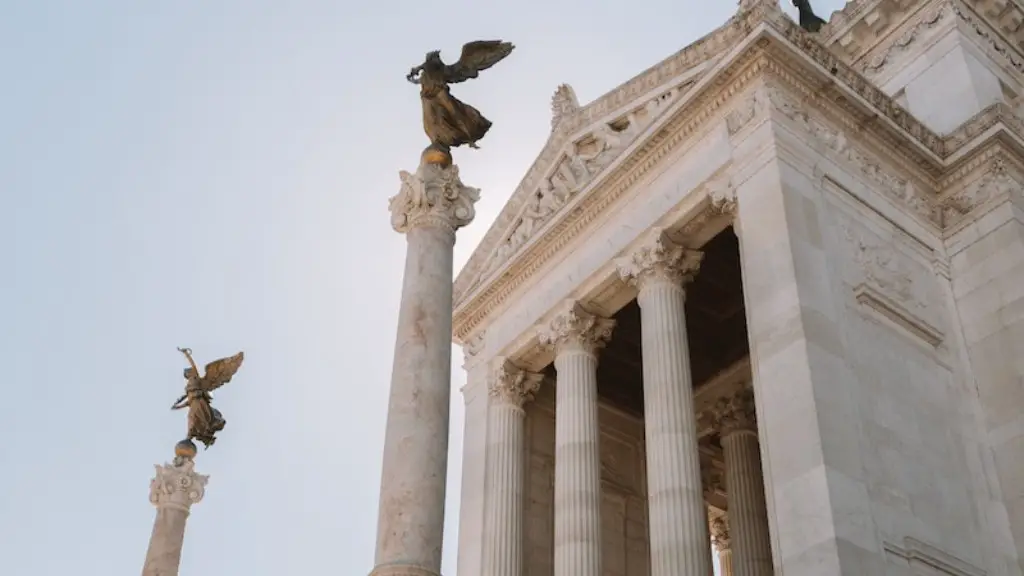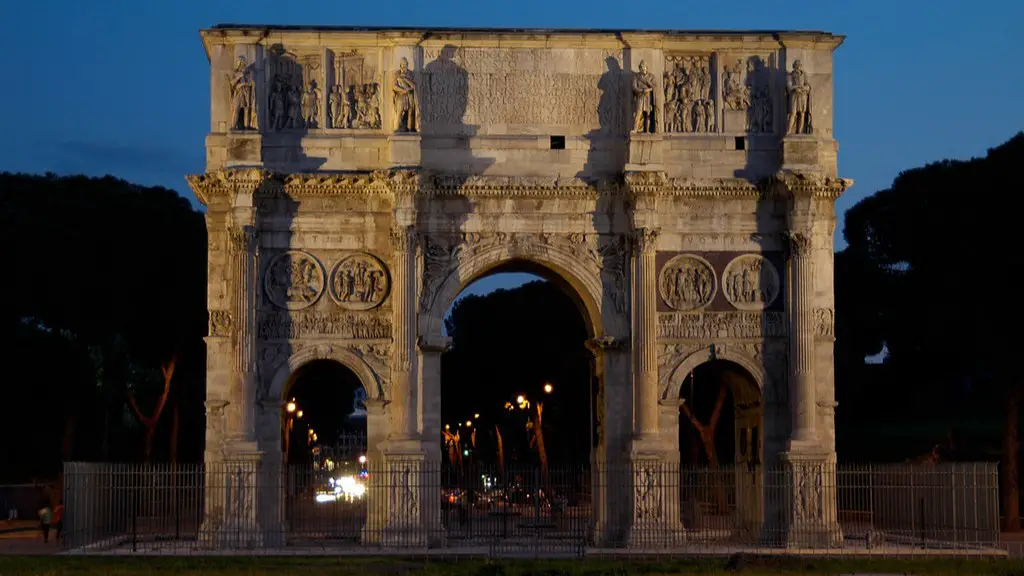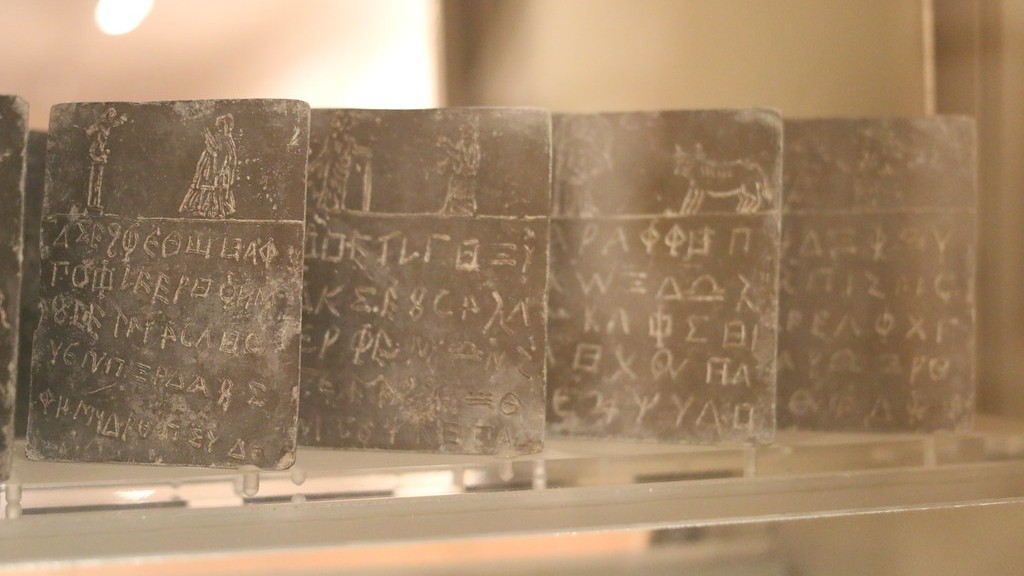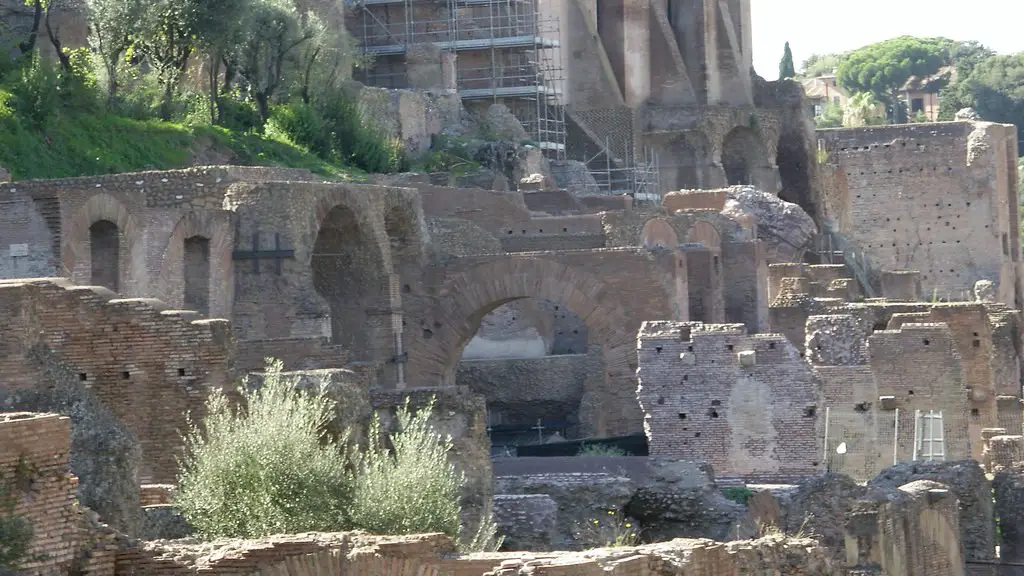The ancient Roman civilization was one of the most powerful empires in the world for centuries. Though it eventually fell, the Romans left a lasting legacy that is still evident in many aspects of modern life. From engineering feats to architectural styles to even some of our laws, the influence of Ancient Rome can still be seen today.
Some ideas that the Ancient Romans had that we still have today are the Julian calendar, roads and highways, and the concept of democracy. The Julian calendar was established by Julius Caesar and it is still used as the basis for our modern day calendar. The Ancient Romans also built an extensive road system that we still use today. They also developed the concept of democracy, which is still used as a form of government in many countries today.
What Roman ideas are still used today?
There is no doubt that the Roman influence can be seen in many modern buildings. From the design of the structure to the materials used, there are many elements that can be traced back to Roman architecture. This is especially evident in public buildings such as sports arenas, spas, and supermarkets, which often mimic the design of Roman originals. However, even private residences can show signs of Roman influence, whether it be in the form of pillars, arches, or tiles. It is clear that the legacy of Roman architecture continues to be felt in the modern world.
There are many elements of ancient Rome that exist in our daily lives and are visible throughout our modern infrastructure, government, and culture. Similar to our modern world, the Romans held cultural events, built and stocked libraries, and provided health care. However, there are also many unique aspects of Roman culture that have shaped our own world in significant ways. For example, the Roman system of law and governance has been a major influence on modern democracies, and the Latin language has had a lasting impact on all aspects of Western culture. In short, the legacy of ancient Rome is still very much alive in the world today.
What 3 ideas did America get from Rome
The separation of the executive, judicial, and legislative branches in America can be traced back to the Ancient Roman model. In times of peace, the executive branch of Ancient Rome was comprised of two consuls, elected by Roman landowners for 1 year terms. These consuls were responsible for the day-to-day running of the government, and held veto power over each other in order to prevent any one person from having too much control. The judicial branch was made up of a Senate, which heard cases and issued judgments, and the People’s Court, which was a court of appeals. Finally, the legislative branch was made up of the Roman Assembly, which was a group of citizens who voted on laws. This separation of powers ensured that no one person or group could have too much control over the government, and helped to prevent corruption.
Roman philosophy and law have had a significant impact on modern life. The stoic philosophy, which stresses the importance of bearing pain and suffering bravely, is still admired today. In addition, many modern law codes in Europe are based on Roman laws. Finally, the US Declaration of Independence and the US Constitution are both based on Roman ideas.
How has the Roman Republic influenced us today?
The Roman Republic was one of the most influential political entities of its time, and its legacy can still be seen in modern governance. Not surprisingly, then, Rome inspired many features of our own Constitution, including its checks and balances, bicameral legislature, term limits and age requirements. In some cases, the Founders copied terms straight out of the Roman constitution: words like senate, capitol and committee.
While the United States is not a direct democracy like Rome was, we can still see the influence of the Republic in our own system of government. For example, our system of checks and balances ensures that no one branch of government becomes too powerful, just as the Roman Republic had multiple institutions (the Senate, the Assembly, etc.) that kept any one person or group from having too much power. Similarly, our bicameral legislature (consisting of the House of Representatives and the Senate) mirrors the Roman Republic’s own two-house legislature (the Assembly and the Senate).
Of course, the United States is not identical to the Roman Republic. We have our own unique system of government that has been shaped by our own history and experiences. Nevertheless, the influence of Rome on our founding fathers is evident, and we can still see the
Roman architecture was so impressive – both in how it functioned and how the buildings looked – that it was the model for later buildings throughout the world. Roman roads, buildings, arches, and aqueducts still stand today over 2,000 years after they were built. This is a testament to the skill of Roman architects and engineers. They designed buildings that were not only aesthetically pleasing but also functional and durable.
What 5 things did Rome give us?
The Romans were a highly advanced society that left a lasting legacy on the world. Here are thirteen things that the Romans did for us:
1. Fast food – The Romans were the first to introduce street stalls and ‘food on the move’ as we might think of it today.
2. Advertising and trademarks – The Romans were the first to use advertising and trademarks to promote their businesses.
3. Plumbing and sanitation – The Romans were the first to develop public plumbing and sanitation systems.
4. Towns – The Romans were the first to develop towns and cities as we know them today.
5. Architecture – The Romans were the first to develop many of the architectural styles and techniques that are still in use today.
6. Roads – The Romans were the first to build a network of roads that spanned the entire world.
7. Our calendar – The Roman calendar was the first to be based on solar cycles, and it is the predecessor of the modern Gregorian calendar.
8. The decimal system – The Romans were the first to develop the decimal system of mathematics.
9. The arch – The Romans were the first to use the arch in architecture and engineering.
10.
The Roman Empire was responsible for a number of inventions and discoveries that have had a lasting impact on the world. Here are 10 of them:
1. Cement: The Roman Empire was responsible for the invention of cement, which is a key ingredient in concrete. Concrete is one of the most important building materials in the world and is used in everything from bridges to buildings.
2. Sanitation: The Roman Empire was the first to develop a system of public sanitation. This included a network of sewers and baths, which helped to prevent the spread of disease.
3. Roads: The Roman Empire built an extensive network of roads, which helped to facilitate trade and transportation. This network became known as the Roman roads and played a significant role in the development of the modern road system.
4. Social care and welfare: The Roman Empire was one of the first civilizations to develop a system of social care and welfare. This system provided assistance to the elderly, disabled, and orphans.
5. Julian Calendar: The Roman Empire developed the Julian calendar, which is the predecessor to the modernGregorian calendar. The Julian calendar was introduced in 45 BC and remained in use until the 1582 AD.
6. Elements of
How did ancient Rome impact the modern world
It is interesting to note that many modern-day legal concepts can be traced back to Roman law. Things like trial by jury, civil rights, contracts, personal property, legal wills, and corporations all were influenced by Roman law and the Roman way of looking at things. It is clear that Roman law played a significant role in shaping the modern legal landscape.
Roman culture and civilization have had a profound and lasting influence on the modern world. In many respects, the modern world is still deeply shaped by the values and ideas that were first developed in ancient Rome. Here are some specific ways in which Roman ideas and institutions still influence our lives today:
-Many of our beliefs about law, justice, government, and citizenship can be traced back to the Romans.
-The Latin alphabet and language have had a profound impact on the development of Western culture.
-Roman architecture is still admired and imitated across the world.
-The use of concrete in construction is a Roman invention that is still widely used today.
What Roman ideas did the US adopt?
The framers of the United States Constitution were heavily influenced by the Roman Republic when they were designing the new government for their own country. They incorporated the Roman idea of separating the powers of government into different branches, as well as the need for a senate as a check on the power of the executive branch. These ideas have helped to create a strong and stable government that has lasted for centuries.
The legacy of Ancient Rome has had a significant impact on modern day western culture in a variety of ways. Perhaps most notably, many modern-day governments are modeled after the Roman Republic. Additionally, the Roman legal system and system of government have also served as a basis for much of modern western law and governance. Additionally, the Latin language, which was derived from Ancient Rome, is still widely used in a number of different fields and is also the official language of the Roman Catholic Church. Furthermore, the architecture and engineering of Ancient Rome have also inspired many modern architects and engineers. Finally, the religion of Ancient Rome, Christianity, is still the largest religion in the western world.
Which Roman legacy do you think is the most important today
The Latin alphabet is the most widespread and commonly used script in the world. It is derived from the Phoenician alphabet and was adopted and modified by the Etruscans. The Latin alphabet is used in many languages, including English, Spanish, French, and Italian.
The Roman Empire had a profound impact on the island of Britain. They gave the Britons new towns, plants, animals, a new religion and ways of reading and counting. Even the word ‘Britain’ came from the Romans. Britain would not be the same without the Romans.
What did Romans contribute to the world?
The Roman empire was built on the backs of its ingenious inventions, one of which was cement. This stronger-than-stone material allowed the construction of massive arches and domes, as well as 50,000 miles of roads that helped unify the empire. Aqueducts were another Roman innovation that carried water from the countryside to cities, making life more comfortable for urban dwellers.
The ancient Romans are known for their great achievements in architecture and engineering. They built strong bridges and roads that have withstood the test of time. Their water systems were also incredibly well-built and ran for miles, bringing fresh water to cities and towns.
Conclusion
There are many ideas from ancient Rome that we still have today. One such idea is the concept of the rule of law, or the idea that society should be governed by a set of laws rather than by the whims of individuals. Another is the idea of representative government, or the idea that those who govern should be elected by the people they represent. Perhaps the most famous idea from ancient Rome that we still have today is the concept of democracy, or the idea that government should be based on the will of the people.
We still have many ideas from ancient Rome today. We have government, law, medicine, education, and even our calendar is based on the Roman system. Ancient Rome was a great civilization that has left a lasting legacy.
